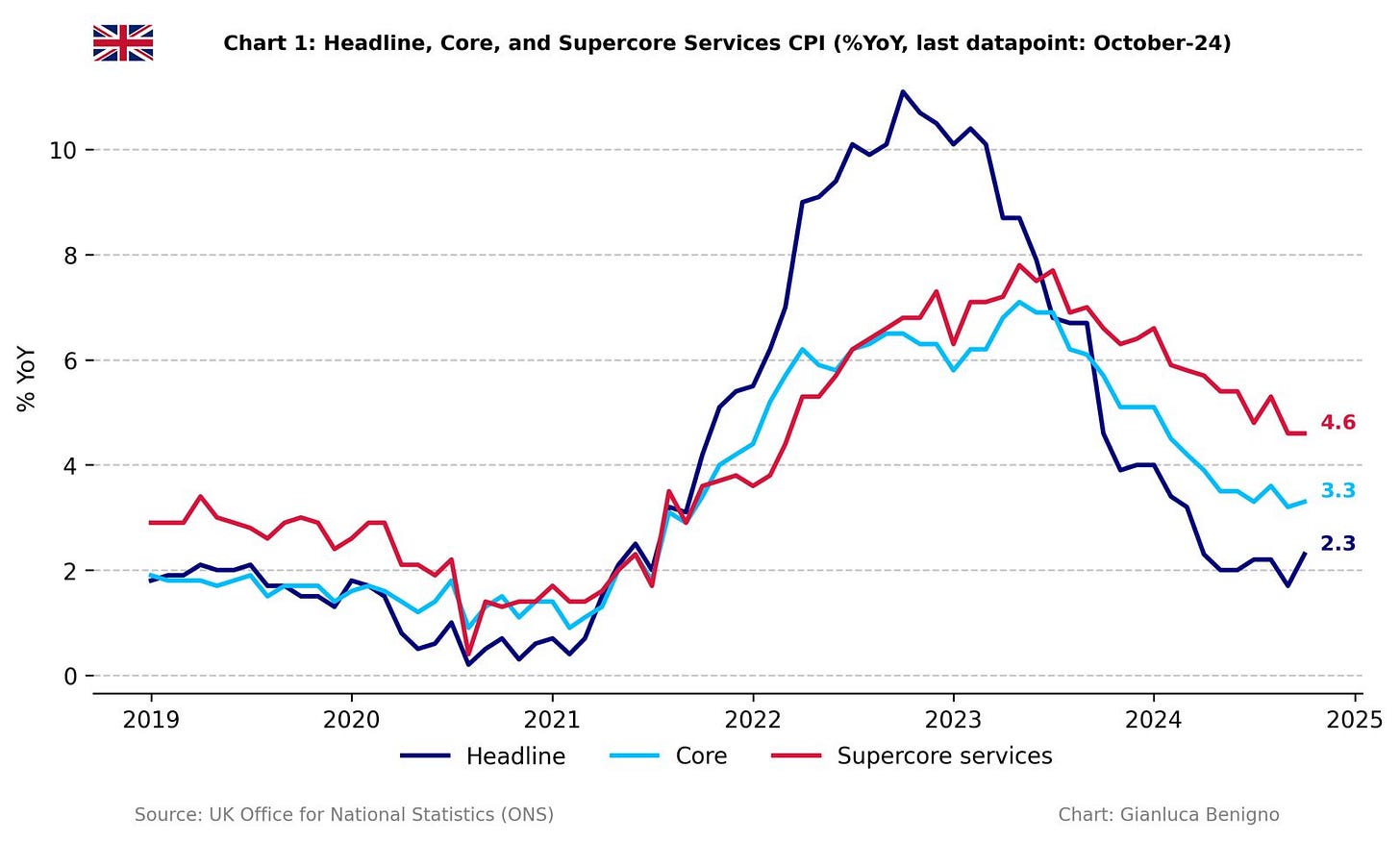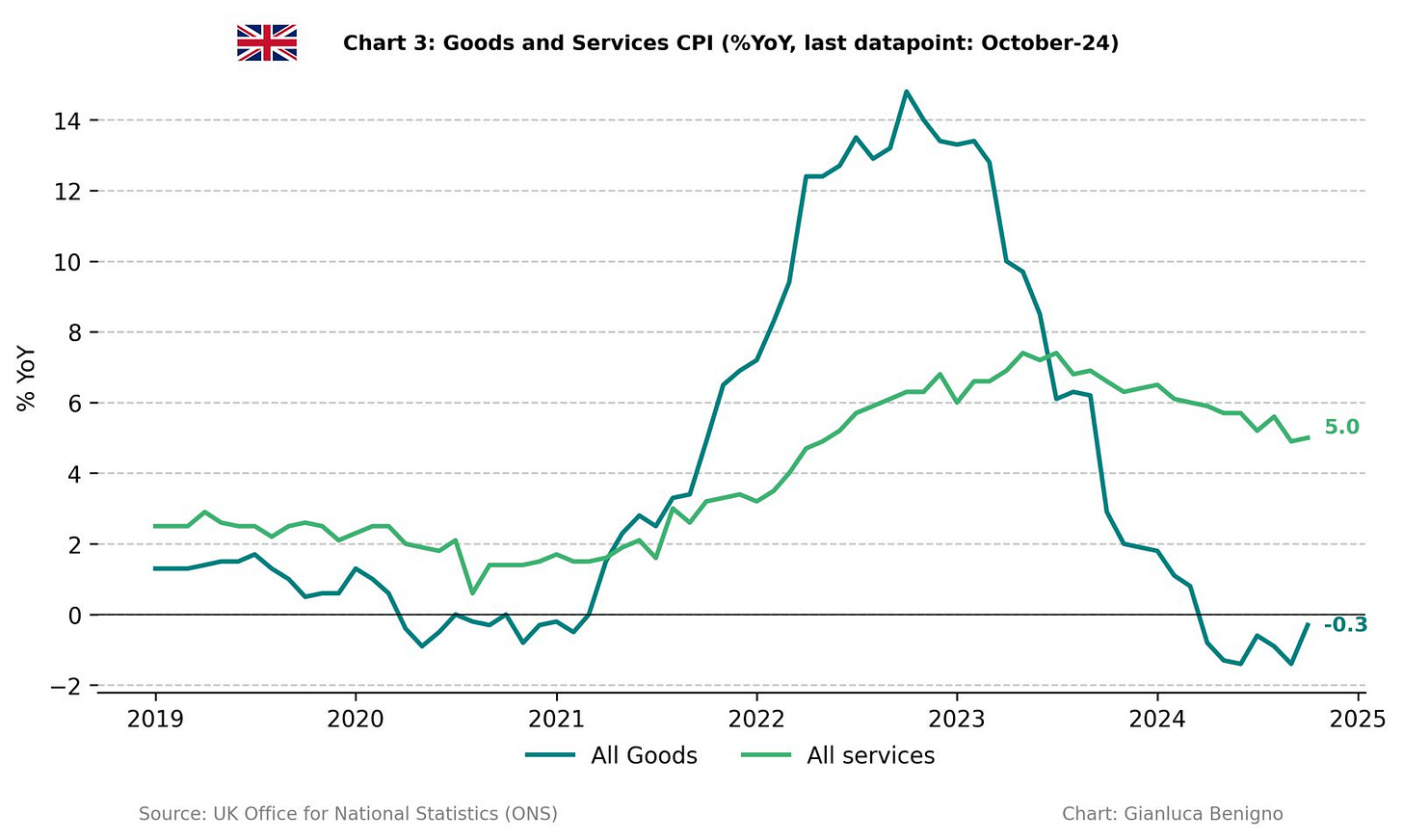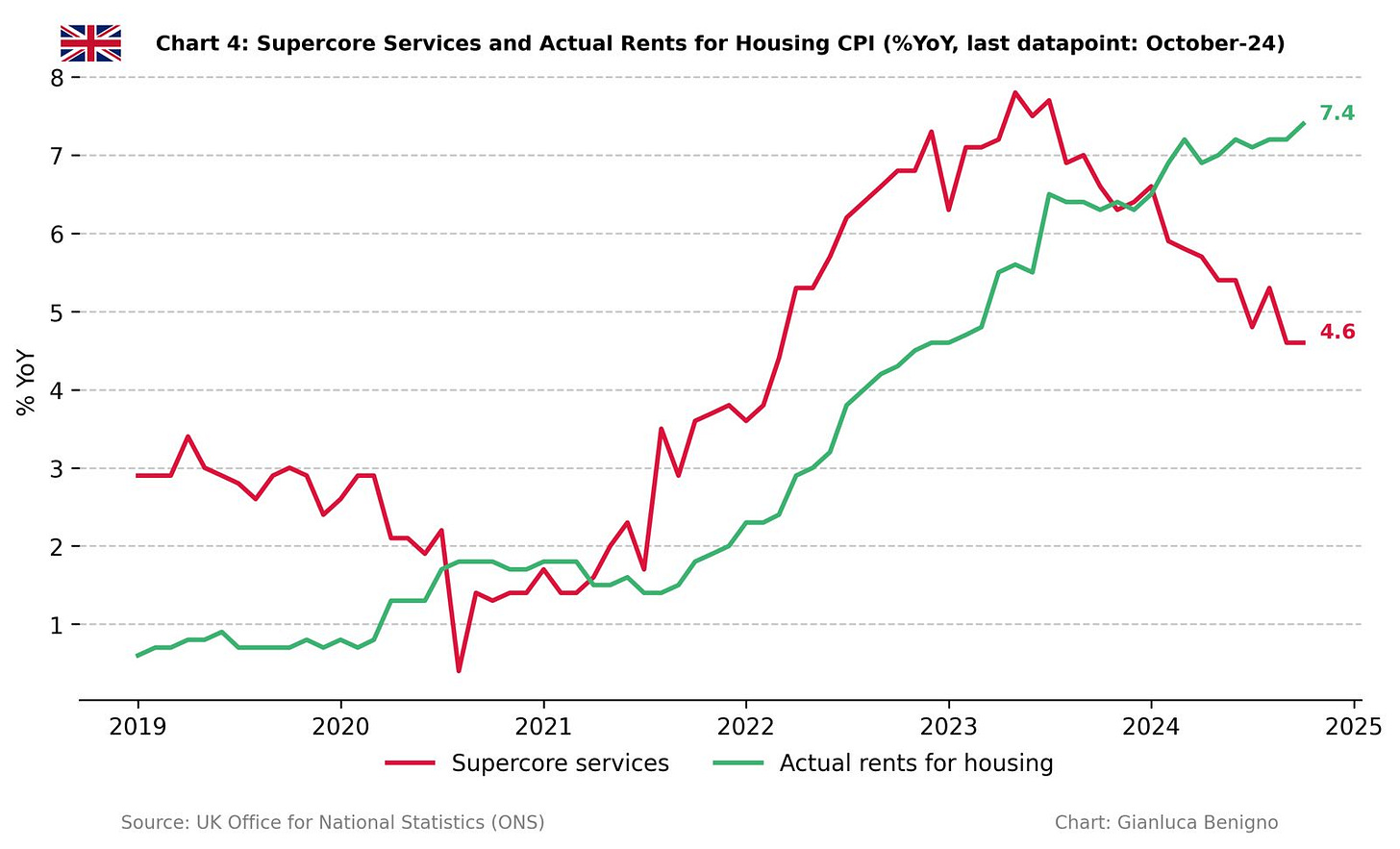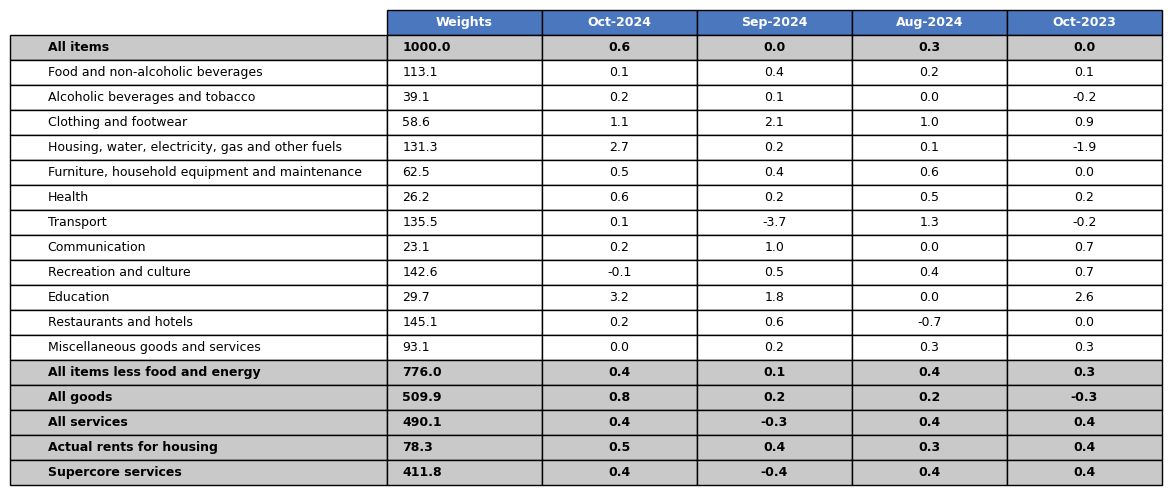Key takeaways:
UK Consumer Price Index (CPI) increased by 2.3% year-on-year (YoY) in October, higher than the market consensus of 2.2% YoY and September’s figure of 1.7% YoY.
Core CPI in October increased by 3.3% YoY, higher than the consensus forecast of 3.1% YoY and September’s figure of 3.2% YoY.
Similarly to other advanced economies, inflationary pressures are primarily concentrated in the services sector, which saw an increase of 5.0% YoY in October, higher than the 4.9% YoY observed in September. Meanwhile, the goods sector continues to experience deflation, this time of 0.3% YoY, a smaller decrease than September's decline of 1.4% YoY.
Within the services sector, the main driver of rising inflation remains the housing component of the CPI. In October, actual rents for housing increased by 7.4% YoY (versus 7.2% YoY in September, 7.2% YoY in August and 6.4% YoY in October 2023).
Our supercore service inflation, which removes actual rents for housing, increased by 4.6% YoY, the same increase as in September.
The Bank of England's monetary policy decision is due in December, and the current consensus among analysts is that the BoE will not change the Bank rate at 4.5%. The recent data on wages and the current inflation release suggest a slow adjustment in core and service inflation validating, from the Bank of England perspective, a gradual path of monetary policy normalization with no change in the Bank rate in December.
Related posts (with links)
UK September-24 CPI Inflation Report (previous release);
UK August-24 CPI Inflation Report (previous release);
UK July-24 CPI Inflation Report (previous release);
Has Wage Growth Fueled Inflation in the UK? (related post);
At the Core of UK Inflation (construction of supercore inflation and supercore wage index);
FT Alphaville on Catch-22 (short version of the Catch-22 effect);
Is the Bank of England in a Catch-22 Situation (long version of the Catch-22 effect);
Review of the Inflation Release
In October 2024, consumer prices increased by 2.3% year-on-year (YoY), higher than the market consensus of 2.2% YoY and the 1.7% increase year-on-year reported in September. On a month-on-month basis, consumer prices increased by 0.6% month-on-month, driven by the housing and household services (because of electricity and gas prices), compared to the no-change recorder in September.
Core CPI, which excludes food and energy, rose by 3.3% year-over-year (YoY), higher than the consensus forecast of 3.1% YoY and lower than September’s figure of 3.2% YoY (see Charts 1 and 2). On a month-on-month basis, it increased by 0.4%, up from the 0.1% increase recorded in September.
The services sector remains the primary driver of inflation, with an increase of 5.0% YoY in October, higher than the 4.9% YoY figure seen in September. Conversely, the goods sector continues to experience deflation, recording a 0.3% YoY decrease in October, a lower decrease than the 1.4% decrease observed in September. On a monthly basis, service inflation has declined by 0.4% MoM, higher than the 0.3% decline observed in September and lower than the 0.4% increase recorded in August. On a monthly basis, goods inflation increased by 0.8% MoM, sensibly higher than the 0.2% MoM increase recorded in September and August. Chart 3 highlights the dichotomy between the persistent inflation in services and the quicker adjustment in goods prices.
As anticipated, the Catch-22 effect remained strong in October, with the housing component continuing to be the primary driver of inflationary pressures (Table 1). Actual housing rents rose by 7.4% year-over-year, higher than the 7.2% YoY observed in September and August, confirming the upward trend observed since September 2021. On a month-to-month basis, rents increased by 0.5% (compared to 0.4% MoM in September and 0.3% MoM in August).
Supercore services, as defined in a previous post (see Chart 4), increased by 4.6% YoY, the same rate as in September.
On a monthly basis, supercore service has increased by 0.4% MoM in October, reversing the decline of 0.4% MoM seen in September.
In a recent post, we examined the relationship between supercore service inflation and supercore wages and found that wages have not been the primary driver of supercore inflation.
In this context, last week featured the release of nominal wage data. Chart 5 highlights our updated supercore wage index, which increased significantly to 5.1.% YoY in September relative to the 3.7% YoY increase in August. Additionally, overall wages have also increased by 4.3% YoY higher than the 3.9% increase observed in August.
Policy Implications
With the Bank of England’s decision due in December, market consensus currently indicates that the committee will likely keep the policy rate at 4.5%. One of the key aspects of the policy decision as highlighted in the latest Monetary Policy Report is the persistence of service inflation and its relationship with inflationary wage pressures. The latest wage release indicates a significant increase in supercore wages and a slow moderation of overall wages. The current inflation outlook presents mixed signals: besides the predicted increase in gas and electricity prices, we note no improvement in supercore inflation (with an increase on a month-on-month basis) and no significant progress in service inflation. A key driver of overall inflation is still the rental housing component which continues to trend higher. One possible interpretation of sustained service inflation could be linked to the propagation of higher housing costs to other sectors of the economy. From the perspective of the Bank of England, this overall picture supports the gradual scenario of easing with no change in the Bank rate at the December policy meeting.
Table 1: CPI by components (% YoY)
Source: UK Office of National Statistics (ONS)
Table 2: CPI by components (% MoM)
Source: UK Office of National Statistics (ONS)











fantastic breakdown 👍🏼